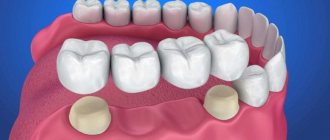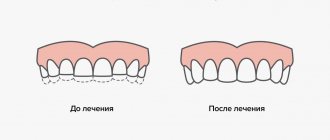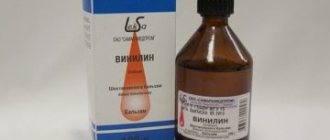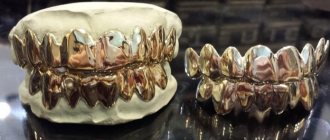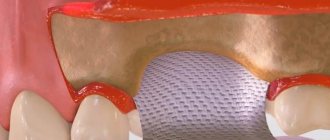Description of the main characteristics of alloys
Hardness as the property of a material to resist the penetration of an indenter—another solid body—into it. This parameter determines the occlusal wear resistance and how the dentist can process and polish the prosthesis.
The yield stress is the stress required to cause permanent plastic deformation in tension. The proof strength is the stress that occurs at a strain of 0.2%. This parameter characterizes the strength of the alloy more than others. This is what people pay attention to first when choosing the design of a prosthesis.
The elastic modulus is another important property that determines the flexibility of a metal frame. An alloy with a high modulus of elasticity bends less under load than an analogue with a low modulus.
Elongation is the ductility of a material, measured as a percentage. The lower this indicator, the more fragile the alloy will be.
The melting temperature range is an important parameter to prevent frame deformation when firing ceramics.
Biocompatibility means that the alloy material is safe for the tissues of the body and humans in general. Non-noble alloys have mixed biocompatibility and should be used with caution.
Manufacturability is the maximum precision in manufacturing and processing of the frame.
The coefficient of thermal linear expansion indicates the compatibility of the alloy with ceramics. The main condition is that the coefficients of the alloy and ceramics must match as much as possible, and there should be no residual stress left in the finished restoration.
General overview
A stump inlay is a dental structure that serves to restore a heavily damaged coronal part of a tooth while maintaining the roots in satisfactory condition.
The device consists of two parts - a stump located above the gum, and one or more fonts placed in the root canals.
The stump serves as the basis for attaching an artificial crown. The pins reinforce the dental canals and firmly connect them to the coronal part, making the entire structure stable and durable.
Stump inlays, in which the pin is integral with the stump, are called non-separable. They are used to restore single-rooted teeth.
If the fonts are made separately from the stump and are connected to it during the final installation of the structure, such stump inlays are called collapsible. They are installed on multi-rooted (chewing) teeth.
The need for collapsible inlays is due to the impossibility of installing two or more pins, integral with the inlay, into divergent (non-parallel) root canals.
Properties of noble alloys
The ideal option, according to most dentists, is expensive gold-platinum alloys. They have impeccable mechanical and physical properties, high biocompatibility and are well combined with ceramics. The most famous noble alloys produced in Russia are “Plagodent” and “Plagodent Plus”.
Palladium in combination with gold forms alloys with excellent physical and mechanical properties and high corrosion resistance. They have a decent yield strength and high tensile strength, so long bridges and permanent elements of locking joints are made from them. In appearance they resemble base alloys. Only 10% palladium in the composition gives the alloy a white color, similar to steel.
Working with palladium structures requires certain skills from the dentist due to the high melting point of the alloy and special casting techniques. Soldering and laser welding should be avoided. Gold-palladium alloys are cheaper than gold-platinum alloys: due to different densities, the difference in cost can reach 2-2.5 times.
The percentage of noble metal in the alloy affects corrosion resistance and biocompatibility. The cost of a prosthesis can only be reduced by switching to non-precious alloys. A noble alloy may contain a high or low gold content, or may not contain this element at all, as, for example, in silver-palladium compositions.
Why, anything else?
The negative impact of metal inclusions in the oral cavity has been studied since the end of the 19th century. All metals used in orthopedic dentistry are destroyed under the influence of mechanical factors and the chemical composition of saliva. The most severe pathological changes were observed in patients with prostheses made of dissimilar metals and it was recommended to especially avoid the gold-stainless steel pair. Metal fillings and crowns change the ionic composition of saliva: a direct relationship has been established between trace elements and microcurrents in the oral cavity. Gallodent, amalgam and stainless steel are especially distinguished in terms of the height of electrical potentials. Electrogalvanic and allergic complications are based on corrosion, and the aggravating factor is the period of use of the prosthesis. As a result of the interaction between the tissues of the oral cavity and saliva, Co, Cr, Ni penetrate through the mucosa and have the ability to accumulate. Metal inclusions, especially in combination, have an adverse effect on the receptor apparatus of the oral cavity and the body as a whole. When using stainless steel prostheses, a large amount of Cr is released, which accumulates in the internal organs. The toxic effect of chromium is manifested by dystrophic changes in the kidneys, the appearance of protein in the urine, dysfunction of the gastrointestinal tract, gastric and duodenal ulcers. KHS is not without its shortcomings. It can also cause pathological changes in the oral cavity. Cobalt and nickel are allergens (haptens) and cause allergic lesions of the oral mucosa in people who have dentures made of stainless steel and chromium-cobalt alloy. The most active allergen in terms of the frequency of reactions caused is nickel. When using these dentures, patients experience a feeling of acidity, burning in the mouth, dryness, and discomfort. Most often this occurs as a consequence of the manifestation of electrochemical corrosion and the occurrence of microelectrogalvanic currents. To eliminate the unfavorable background, all inclusions must be replaced with indifferent ones, rather than avoiding dissimilar metals. The negative impact of CCS on human organs has led to the need to search for new materials with improved characteristics for orthopedic treatment of patients. The use of titanium alloys for otropedic dentistry has recently attracted great interest.
What determines the color of noble alloys?
Doctors pay attention to color. It is believed that a very yellow alloy containing a lot of gold improves the color of ceramics: the oxides of such alloys are easily coated with a thin layer of opaque and look aesthetically pleasing. A patient who observes the golden color of the crown frame at intermediate stages has no doubt about the need to purchase such an expensive prosthesis.
In some noble alloys, the proportion of palladium, platinum or silver is increased, so they lose their yellow color, but remain just as strong. Such varieties are suitable for the manufacture of extended bridges, with or without implant support. If you are going to install a single crown, you can get by with an option with a high gold content and a low content of platinum group metals.
Alloys with fewer noble components have a pronounced yellow color and do not have such good properties as white alloys. They contain a high content of indium, which in combination with palladium gives a bright straw color. They do not have sufficient elasticity and corrosion resistance. They are used mainly in China and India on a massive scale to reduce the cost of dentures.
Correctly selected alloy for dental prosthetics
V. V. Nosov private dentist, Krasnodar
High-quality prosthetics are distinguished not only by a pronounced aesthetic effect. Along with such requirements as high strength and stability, the denture must optimally fit the patient and also be biocompatible with body tissues. The main criteria were and remain durability of the structure and complete restoration of function.
Which alloy to choose for the future prosthesis? An urgent issue in the context of declining patient solvency and growing competition. Alloys based on base metals are an acceptable alternative for patients who want to save money. They are popular among patients due to their high safety and good treatment prognosis. They are characterized by good biocompatibility with body tissues and do not corrode. A stable layer of chromium oxide provides additional reliable protection to the surface of the prosthesis. In my work, I have been successfully using the standard alloy from BEGO Wirobond C for many years (Fig. 1). The distinctive features of this alloy are increased mechanical stability and good tolerance by the body. Due to their low thermal conductivity and relatively light weight, clasp dentures made from the Wironium plus alloy (Fig. 2) are characterized by increased comfort for patients. However, in combined prosthetics, in the manufacture of telescopic crowns, as well as superstructures, preference is usually given to gold-containing alloys.
Rice. 1. Metal for ceramic cladding
Rice. 2. Metal for clasp dentures
Gold-containing alloys are suitable, among other things, for the manufacture of dental crowns, bridges and inlays (Fig. 3-5).
Rice. 3. Gold alloy frame with Minicon lock
Rice. 4. Frame made of gold-containing alloy with Minicon lock on the lingual side
Rice. 5. Frames for ceramic cladding, disassembled
On frames made of precious metal alloys, it is possible to apply layer-by-layer ceramics - a material whose structure best imitates the anatomy of a natural tooth. The high strength of the connection between the frame and the ceramics allows you to achieve the most pronounced natural effect.
Alloys based on noble metals have excellent mechanical properties, which has a positive effect on their processing. These benefits are especially noticeable when installing inlays or partial crowns made of gold. Their precise fixation on the tooth surface is carried out using a special polishing method. In this way, the dentist achieves a strong connection between the crown and the natural tooth prepared for the crown. Gold inlays not only have good technological properties, they are also distinguished by excellent biocompatibility with body tissues. With proper care, inlays can last a lifetime.
For demanding patients, gold is the most popular material for making a prosthesis frame. Pure gold is considered a soft metal and for this reason is not used for dentures. It is used in dentistry, usually in the form of an alloy with other metals. Such alloys regularly undergo strict quality control in accordance with international standards.
Using a clinical case as an example, we will demonstrate the restoration of function in the lateral part of the oral cavity when working with a face bow in an articulator.
The work always begins with plastering diagnostic models into an articulator for the orthopedic dentist to plan the future orthopedic design and draw up a financial treatment plan (Fig. 6). This is followed by an order to the dental laboratory to perform Wax-Up using the occlusal compass. Based on the wax modeling, teeth are prepared, impressions are taken and temporary crowns are made.
Rice. 6. Diagnostic models plastered in an articulator
The impressions and facebow fork are sent to the laboratory (Fig. 7). The dental technician makes high-precision models and plasteres the upper jaw model into the articulator using a facebow fork (Fig. 8). Using habitual occlusion recorders, a model of the lower jaw is plastered (Fig. 9). When re-modeling prepared teeth, the technician must copy the Wax-Up (Fig. 10).
Rice. 7. Impressions and Protar facebow fork
Rice. 8. Plastering the upper jaw model into the articulator
Rice. 9. Plastering the lower jaw model into the articulator
Rice. 10. Models with Wax-Up and Giroform system
When producing orthopedic structures, it is very important to create a competent occlusal surface; you need to have excellent knowledge and skills in wax modeling (Fig. 11-13).
Rice. 11. Modeling of 36, 37 teeth
Rice. 12. Modeling 46, 47 teeth
Rice. 13. Finalized contact points
Simultaneous casting of both jaws modeled from wax is not allowed; first, it is necessary to cast the dentures of one of the jaws, process, polish and fix them on the model using corrective silicone. It is important to imitate the fixation of dentures on the patient’s teeth using cement and only then add the lost contacts, then you can proceed to casting counter structures (Fig. 14-16).
Rice. 14. Cast crowns of 36, 37 teeth and wax modeling of 26, 27 teeth
Rice. 15. Cast onlays 46, 47 teeth and wax modeling 16, 17 teeth
Rice. 16. View from the lingual side
After casting, processing, polishing, and weighing of the metal follow. The dentures are delivered to the office with the occlusal surface treated with Perloblast (Bego) (Fig. 17-20).
Rice. 17. Finished crowns and onlays for the lower jaw
Rice. 18. Functional design of the chewing surface
Rice. 19. Ready-made crowns, inlays, onlays, veneers for the upper jaw
Rice. 20. Final weighing of metal
Thanks to their special, carefully selected composition, gold-containing alloys meet the highest requirements for alloys for prosthetics. They do not contain copper and palladium, and the content of gold and platinum is higher than in conventional alloys based on noble metals. Environmentally friendly alloys are especially suitable for patients with allergies to certain metals and for all those who care about their health.
Three types of base alloys
Chromium alloys have been used in dentistry for more than eighty years. They are characterized by good corrosion resistance, strength, high modulus of elasticity, low density and affordable price.
- Nickel-chrome-containing alloys are used more often for frames for the purpose of further cladding. They contain 62-82% nickel and 11-22% chromium, as well as additives - molybdenum, silicon, manganese, iron, gallium, titanium, zirconium.
- Cobalt-chrome alloys contain 50-65% cobalt, 25-35% chromium and 2-6% molybdenum with rare exceptions.
The melting point of these alloys is between 1140 and 1460 °C. The polished surfaces of the dentures are shiny, silvery-white. Light weight, density slightly exceeds 8 g/cm3. Such alloys are excellent for installing single-type crowns and bridges on teeth; they are stronger and harder than noble alloys, but require the use of special abrasive tools during machining. Occlusal correction, polishing and removal of dentures cause certain difficulties and require much more time.
The bond between ceramics and metal is as strong as that of noble alloys. Casting is less precise, which is not noticeable on small castings. The issue of biocompatibility is questionable. Nickel and chromium are strong allergens.
- Titanium alloys have low density, excellent mechanical properties, high biocompatibility and corrosion resistance. However, casting titanium alloys for the manufacture of fixed prostheses has become obsolete due to the high cost and technological complexity of the process. Milling is much more often used.
In order to save money, stainless steel is increasingly being used for the manufacture of fixed dentures. Stamped crowns are characterized by their low cost and minimal amount of tooth preparation. In foreign dentistry they are used for temporary prosthetics of baby teeth.
Base metals in dentistry
In addition to steel, cobalt-chromium alloy can be used in dental treatment. Its composition looks like this:
- From 3 to 5% nickel. This element is added to simplify the processing of the material, increase viscosity and ductility.
- From 4 to 5.5% molybdenum. This additive improves strength characteristics.
- 0.5% iron.
- 0.5% silicon.
- 0.2% carbon.
- 66-67% cobalt. The alloy base is a light metal with good strength characteristics.
- From 26 to 30% chromium. This element increases the material's resistance to corrosion.
The alloy is used primarily for casting. It can be used to make bridges and clasp prostheses, clasps and crowns. In addition, it is used as a frame material in metal ceramics.
Titanium-based alloys should also be mentioned. This metal is difficult to process, but it has a unique ratio of lightness and strength. Used alone or in combination with nickel.
Primary requirements
The important properties that metals and alloys in dentistry must have are:
- high biological compatibility;
- resistance to corrosion and tarnishing;
- maintaining constant volume and shape;
- safety, no toxicity;
- inertness in the oral cavity;
- mechanical properties (strength, hardness, rigidity, wear resistance, ductility);
- physical properties (density, malleability, thermal conductivity, melting point);
- aesthetic indicators;
- hygienic properties (ease of cleaning with standard dental care products; in the case of using metal dentures, patients should not feel a metallic taste);
- technological characteristics (ease of preparation and processing, segregation).
Alloys intended for ceramic coating must meet the following criteria:
- connects well with porcelain;
- the temperature when processing the alloy should be higher than the temperature when processing porcelain;
- the thermal expansion value of the alloy should be equal to the CTE of porcelain.
An important aspect is shrinkage, which occurs during the transformation of the liquid state of the metal into a solid state.
If the shrinkage is too high, it makes the fabrication of dental structures difficult. Ease of metal casting is important to every dental technician. The lower the temperature when melting and pouring, the easier it is to work with them.
The characteristics of metals must necessarily meet the requirements associated with their purpose and processing methods.


